Straight Talk About Stress 2012
advertisement
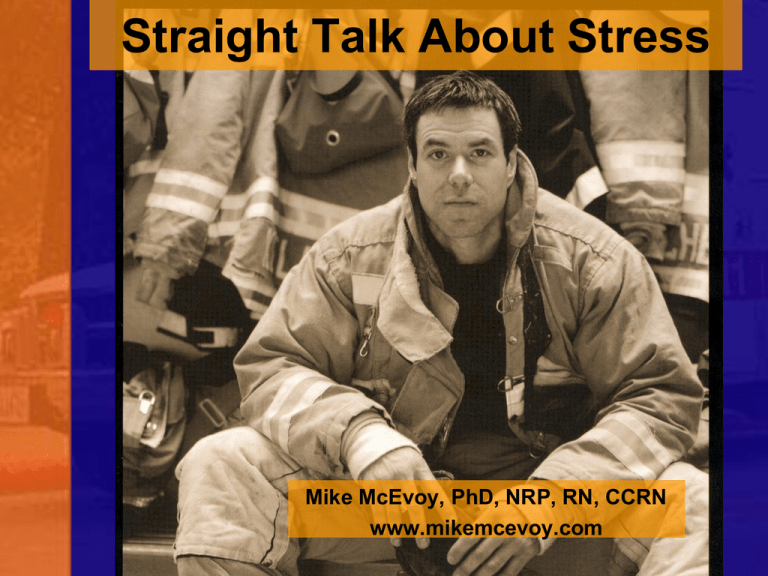
Straight Talk About Stress Mike McEvoy, PhD, NRP, RN, CCRN www.mikemcevoy.com Disclosures • None • I don’t know how to play golf or ski I am not a hunter Author: Overview • • • • Is stress what we think it is? How well do we handle stress? Maximizing your stress skills Personality traits of emergency responders • The myth of CISD • Best practices for organizations and mental health providers Define Stress A response to a demand for change BOTH: • Physical • Psychological A response to a demand for change • Different for different people Arousal Score Study of Arousal Level for Sky Divers 8 7 6 5 4 3 2 1 0 1 2 3 4 5 6 7 8 9 10 11 12 13 14 Jump Sequence Experienced Novice A response to a demand for change • Stress is not the event but our reaction to it Life Events Death of spouse Jail term 20% pay cut Fired from job Death of friend Traffic ticket Car accident Life Events Divorce Marriage New home Retirement New baby Vacation Christmas Life Events Divorce = Marriage = New home = Retirement= New baby = Vacation = Christmas = Death of spouse Jail term 20% pay cut Fired from job Death of friend Traffic ticket Car accident Emergency Services You deal with stress every day Emergency Services • Stressful occupation • Expect to see others in trouble • Routinely manage crises You deal with stress every day SO… are you able to deal with any level of stress in your own life? EMS Stress • Is stress in EMS different than in other professions? Fire and EMS Service Stress • FEMA funded 3year, 5-state study of CISD, firefighters’ disposition, and stress reactions. • Included personnel from Murrah building bombing in OKC. Fire and EMS Service Stress • Social support structure of fire service is protective • Firefighters are quite resilient • Firefighter social support comes first from family, then from friends and coworkers Fire and EMS Service Stress • The majority of firefighters would seek professional support from clergy (40.9%) over professional counselors (7.4%) • Firefighters tend to have positive views about the world despite continued exposure to traumatic events “John Wayne Syndrome” “John Wayne Syndrome” “You ain’t hurt unless there’s a bone stickin’ out” Impact of Major Stressors Pathological Stress • Acute Stress Disorder (ASD): – Symptoms experienced during or immediately after the trauma, last for at least 2 days, and resolve within 4 weeks. • Post-Traumatic Stress Disorder (PTSD): – Symptoms begin within the first 3 months after the event, may last months to years. – Lifetime incidence: 7.8% – Population prevalence ~ 0.8% – Lower incidence in emergency responders ASD and PTSD 1. Reliving the event 2. Emotional anesthesia 3. Persistent anxiety Pathological Stress • NYC below 110th street after 9/11: – Overall PTSD at 7.5% four weeks after attack. – Higher (~20%) closest to WTC site. – Resolved to 1.7% by four months following. – Further resolved to 0.6% by six months. » Galea et al. (2002, 2003) Stress Prevention • If you can handle the daily grind, you can handle the big event Stress Prevention • Stress can not be treated after exposure • Emergency personnel must have good stress management skills • Most stress in emergency services is not from major events, but day-to-day job hassles: – – – – – Pay Equipment Dealing with the public Administrative hassles Work hours Do you know a “Happy Person”? Happy People Choose to be Happy Miserable People Choose to be Miserable Most of us are somewhere in between Many of us would like to be happier Your Personal Stress Management Program Three realms of experience where demands/perception of demands can cause stress: • Body • Mind • Interactions with others Stress Management Tips for Emergency Responders 1. Condition your body and mind Stress Management Tips for Emergency Responders 2. Listen to your inner voice Stress Management Tips for Emergency Responders 3. Never stop growing and learning Stress Management Tips for Emergency Responders 3. Never stop growing and learning Stress Management Tips for Emergency Responders 4. Be positive Stress Management Tips for Emergency Responders 5. Have a life outside emergency services Stress Management • Emergency Services personnel are resilient • Use techniques that promote resilience • People cope differently • Maintain as much control as possible Stress Prevention • • • • • Well run incidents Well managed organizations Well prepared providers Well conditioned personnel Well grounded lives Straight Talk About Stress Mike McEvoy, PhD, NRP, RN, CCRN www.mikemcevoy.com Additional Information… Other Crisis Oriented Occupations: One Critical Difference: One Critical Difference: Brotherhood You deal with stress every day SO… are you able to deal with any level of stress in your own life? Not Always - Personality traits that make a good EMT also increase stress! “Am I different?” One Word: Adrenaline • 90% of population lack traits needed to perform well as an emergency responder • Emergency responders are “Adrenaline Junkies” • Average citizens are not The “Adrenaline Junkie” • Control oriented The “Adrenaline Junkie” • Attentive to detail The “Adrenaline Junkie” • Traditional The “Adrenaline Junkie” • Strong role identity The “Adrenaline Junkie” • Action oriented The “Adrenaline Junkie” • Risk takers The “Adrenaline Junkie” • Highly dedicated The “Adrenaline Junkie” • Family oriented The “Adrenaline Junkie” • High expectations The “Adrenaline Junkie” • Strongly rescue oriented “Adrenaline Junkie” Issues • • • • • • • • • • Control oriented Attentive to detail Traditional Strong role identity Action oriented Risk takers Highly dedicated Family oriented High expectations Strongly rescue oriented The challenge of being Control Oriented • You might be a difficult person! – Prefer to be in charge – Independent thinker – Do not take direction well – Difficult to supervise High Expectations = Perfectionism • Negative self talk. (poor self esteem) • Negative beliefs about others. (quick to criticize) CONTAGIOUS NEGATIVE POSITIVE Person + Person + Person + Person + Person = Team It’s all up to you. POSITIVE • Attitude – Appearance, tone, demeanor • Respect – Words, actions • Motivation – Praise, celebration, enthusiasm • Value – Person + Person + Person + • Mistakes – Forgive people for being human LEADERS POSITIVE 1. Know your strengths & weaknesses 2. Have a sense of humor 3. Believe the future will be better than the past 4. Respect your power 5. Build and maintain relationships 6. Be a team player 7. Help others develop their abilities What About CISD? • Created by Jeff Mitchell at UMB 1980’s • Became defacto response to “Critical Incidents” • Premised on preventing emergency responder attrition from stress • Paucity of research on effectiveness Cochrane Collaboration • Worldwide network of centers, based in England • Launched 1995 • Definitive source for evidence based practice • Quarterly publication, several separate databases, position papers define best practices CISD – Summary of Scientific Literature (Peer Reviewed) • • • • Mitchell model CISD (not CISM) Emergency Services (vs. general population) Cochrane Library Database (last CISD revision 14 Nov 2005, last substantiative update Dec 2001) CISD - Conclusions 1. Value neutral to negative 2. Not effective compared to all forms of debriefing and no debriefing at all 3. While perceived as helpful, rescuer satisfaction ≠ effectiveness 4. Some evidence of harm to certain individuals, often iatrogenic CISD – General Population Unsafe! • • • • • Adds to trauma Complicates recovery Should not be used Now banned in most countries US Institute of Mental Health and World Health Organization both recommend AGAINST it CISD – Emergency Services • Not appropriate for 60% of police, fire, EMS personnel • 85% talk about critical incidents afterwards (colleagues and peers preferred) • 15% prefer not to talk at all CISD – Iatrogenic Harm (Worsening anxiety, depression, PTSD) • Mandatory attendance • Discussion of event (relive emotional trauma) – MH error • “Mixing” groups – Peripheral personnel with those directly involved in the incident – People lost loved one with people whose loved one survived You know who we haven’t heard from yet, is John. CISD Harm – Risk Factors • Repeated or accumulated severe unresolved stressors • Lack of social supports • Injury • Preexisting psychological problems • Traumatic bereavement • Strong negative beliefs about meanings of normal stress reactions • People who most seek CISD show poorer long term outcomes CISD – What Now? • OK - you made your point. What should we be doing instead? PFA – Psychological First Aid Three basics of psychic resilience hardwired into our biological makeup: 1. Recreate a sense of safety 2. Establish meaningful social connections 3. Reestablish a sense of efficacy Working Definition • “Psychological first aid (PFA) refers to a set of skills identified to limit the distress and negative behaviors that can increase fear and arousal.” (National Academy of Sciences, 2003) • Not new: premised on military “buddy care” • Evidence connects physiological arousal with later PTSD development General Principles of PFA The most urgent task is to focus on restoring emotional equilibrium Recreate sense of safety • Immediate physical needs – Bathroom, food, fluids, breaks, clothing changes, sleep, time off… • Protect from onlookers & media • Determine if formal or informal help is required (MH) Meaningful social connection • Help connect with family, friends, children, significant others – Talking in homogenous groups (ie: firefighters vs. heterogeneous strangers) • Provide information on normal signs and symptoms including suggestions for what to do • Educate significant others on s/s and how they can help Reestablish sense of efficacy • Recognition for job well done • Encourage normal routines & roles • Discuss self care strategies to reduce anxiety – Exercise, rest, relaxation • Encourage people to support and assist others • Identify resources that promote effective coping • Accurate, simple information about plans, schedules, events • MH follow-up assessment @ 3 months PFA • Protect • Direct • Connect Protect • From further physical or emotional harm, including gruesome or graphic sights and sounds • Dignity and privacy • From media intrusion or curious wellwishers • From danger to self or others Direct • Toward quiet, safe areas • With calm, compassionate but authoritative tone • Any available personnel to appropriate tasks and to offer support to co-workers Connect • With mental health resources • Individuals and families with printed and online resources for coping with the emotional consequences of crises • Friends, family, co-workers and other sources of emotional support • Individuals to information about the event or any relevant news pertaining to the situation Stress Prevention • • • • • Well run incidents Well managed organizations Well prepared providers Well conditioned personnel Well grounded lives Summary • • • • • People are resilient Friends are important Conversation helps Time is a great healer Look out for others while you look out for yourself - Gist, et al., The origins and natural history of debriefing, 1998. The End The Beginning • Thank you! www.mikemcevoy.com
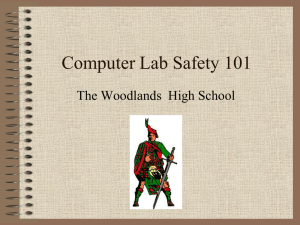

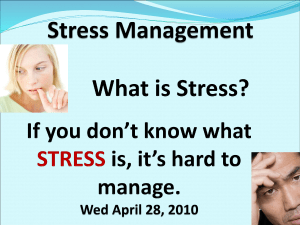
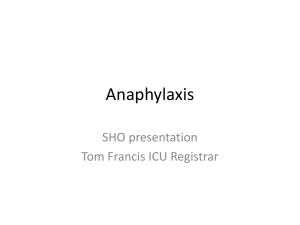

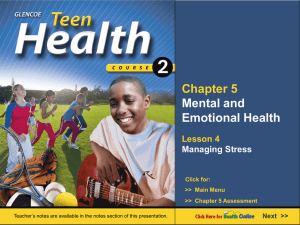



![njc15_publication_3[^]](http://s3.studylib.net/store/data/005891283_1-d365199741fdecc6291df2bb03b740c2-300x300.png)